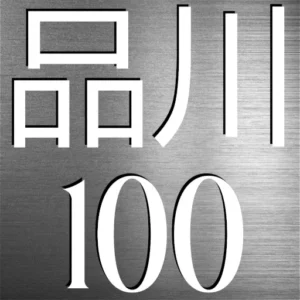Tenmyokokuji Cemetery – 天妙国寺の墓地
🪦 Final Echoes – Legends beneath the stone
Tenmyokokuji Cemetery sits quietly inside the grounds of Tenmyokokuji Temple in Minami-Shinagawa. It holds the graves of notable figures in Japanese cultural and martial history. Some names are well-known, while others are cherished by fans of rakugo1, classical music, and swordsmanship. Together, they offer a window into Shinagawa’s layered history.
🎧 Storyteller’s Silence – The voice that moved an era
One of the most celebrated figures buried here is Tōchūken Kumoemon (桃中軒雲右衛門). He performed rōkyoku, or narrative ballads, during the Meiji and Taishō eras. Known as the “Saint of Rakugo,” his voice stirred deep emotion through samurai tales. Shinagawa Ward has designated his grave as a historic site.
⚔️ Blade Before the School – Master of one cut
Itō Ittōsai (伊東一刀斎) also rests here. His real name may have been Itō Yagorō. Though his life details remain unclear, many credit him as the founder of the famed Ittō-ryū sword school. His teachings helped shape the future of kendo, and his legend lives on.
🐿 Tenmyokokuji Cemetery – Nichiren’s modern torchbearer
Honda Nisshō (本多日生), a reformer in modern Nichiren Buddhism, also lies here. He led both the Myōmanji-ha and Kenpon Hokke sects during his life from 1867 to 1931. His efforts helped reshape Buddhist practice in modern Japan.
🎵 Echoes in the Dust – Songs that outlast silence
This cemetery also honors artists in traditional music and theatre. Yoshimura Isaburō (芳村伊三郎) was known for his work in Naga-uta and inspired kabuki plays. Tsuruga Shinuchi (鶴賀新内), the third of his name, gained fame for Jōruri storytelling. His legacy still echoes through Japan’s musical heritage.
🏠 The Temple Behind the Graves – Faith and foundations
Tenmyokokuji Temple was founded in 1285 by the monk Tenmoku, a follower of Nichiren. Tokugawa Ieyasu stayed here just before entering Edo in 1590. Soon after, the temple was granted land and official status.
Visitors can still see the foundation stones of a five-story pagoda built in the Muromachi period. A storm toppled it in 1614, but the structure was rebuilt—only to burn down in 1702. Though moved, the stones remain important historical evidence and are recognized as Tangible Cultural Property.
The temple belongs to the Kenpon Hokke sect, a branch of Nichiren Buddhism. Originally called Myokokuji, it was renamed Tenmyokokuji in 1972. Today, the temple houses rare treasures, including a painted Muromachi-period mandala and valuable historical documents. Its cemetery may be small, but its significance is great.
Footnote:
- Short, humorous stories, often satirical, told by professional storytellers (rakugoka), often adopted by popular writers. The lone storyteller sits on a raised platform called a kōza. Using only a paper fan and a small cloth as props, and without standing up from the seiza sitting position, the rakugo artist depicts a long and complicated comical (or sometimes sentimental) story. Theaters used for rakugo
are called yose. Rakugo has been described as “a sitcom with one person playing all the parts”. ↩︎
🧭 Visitor Information
Address: 2-8-23 Minamishinagawa, Shinagawa City, Tokyo 140-0004, Japan
Best season: Year-round
Admission: Free
Official Info: https://tenmyokokuji.jp
Please be respectful when visiting. This is a sacred space and an active cemetery.
Where is it?
| what3words | ///push.boasted.cares |
| latitude longitude | 35.6119905 139.7432586 |
| Nearest station(s) | Aomono-Yokocho (Keikyū Line) Shimbamba (Keikyū Line) |
| Nearest public conveniences | Possibly on the premises. In doubt use the one at the station before you visit. |
Show me a sign.

It’s near the front entrance.
Withervee says…
This isn’t a tourist spot. It’s a quiet place where names once famous now rest under stone. If you know who they were, you’ll feel something here. If not—maybe you’ll wonder who else waits to be remembered.
Site Character
- Lifestyle 生活 (Seikatsu): ❌
- Historical Significance 歴史 (Rekishi): ✔️
- Atmosphere/Natural Features 風土 (Fūdo): ✔️
Who in their right mind would vote for this?
- Local Nichiren Buddhists
- Grave hunters
- Rakugo fans
- Kabuki scholars
- Samurai buffs
Further reading
Shinagawa History Museum Special Exhibit – The History and Treasures of Myokokuji Temple

